Multiscale.Sim EN
Multiscale.Sim Analysis Examples
Simulation of fiber-based composites and validation of results: Fusion of actual measurement and virtual material testing.
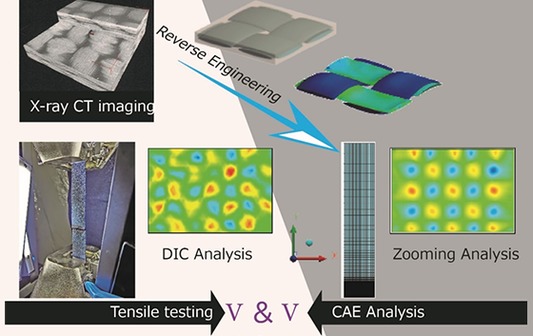
Testing of carbon fiber reinforced materials can be difficult due to the complex structure and material behavior of
the composite. To tackle this problem, researchers at Shimadzu and Cybernet Systems developed a workflow that
compares CAE analysis results with the results of actual measurements of a fabric material. This is an ideal case
study that shows the value of total material test: a holistic approach to material testing.
Material model for distortional hardening of unidirectional CFRTP considered from the results of virtual material testing.
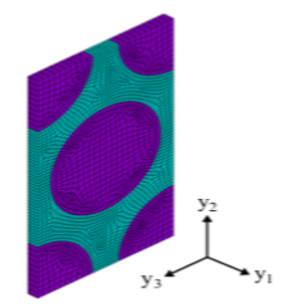
In this comprehensive study, we investigated the anisotropic elastoplastic material behavior of CFRTP and suggested
a new hardening rule. We adopted the virtual material testing approach based on the homogenization theory that has a
high affinity with this type of analysis because it can easily create any kind of deformation mode.
Predicting the strength of composite materials using Ansys software and Multiscale.Sim
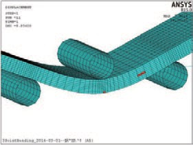
Composite materials are substances formed by combining two or more different materials into one. Their greatest
advantage is that these new materials have the characteristics and properties of their constituent parts. As a
result, composite materials are widely used in many industrial fields today, particularly since the emergence of
carbon and glass fibers with their superior properties. However, currently, there are substantially less simulation
results available than for metals. This technical article discusses some of the problems of using finite element
method (FEM) simulation software for composite material analysis and introduces new solutions from CYBERNET with
Ansys Software and Multiscale.Sim for solving these problems.
Effect of underfill microstructure on solder life and predicting crack initiation and propagation on solder in semiconductor package under thermal cyclic load.
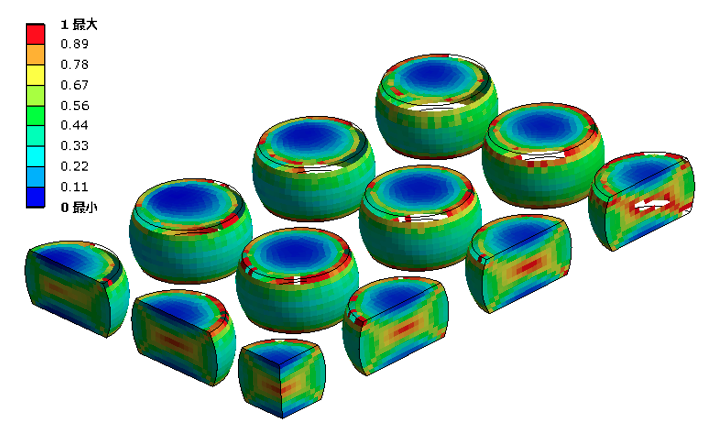
Choosing the right composite for underfill is extremely important for solder life of your PCB. Using Non-linear
homogenization, Multiscale.Sim can evaluate material property of underfill and predict crack initiation and
propagation.
Elastic-plastic numerical material test of the FRP in consideration of the interfacial peeling/crack propagation in resin

In the non-linear version Multiscale.Sim, it is possible to define the micro model freely to all non-linear material
models that are held in Ansys, and can be performed taking into account the influence of them in the numerical
material test. This case analysis introduces the example of numerical material test that takes into account the
interfacial peeling of the FRP fiber matrix and the cracking propagation in the resin.
Elasto-plasticity numerical test of the
FRP material with consideration of crack propagation in resin/ interfacial peeling of multi-scale analysis
Large strain numerical material test of fiber-based composite material using advanced element formulation

When the numerical material test is performed on the material model that consists of materials of different
stiffness, the elements are distorted significantly at the interface of the material. As a result, the calculation
may become unstable. This example shows the effects of improving the analysis stability in this problem through the
implementation of a new advanced element formulation.
Large strain numerical material test of
fiber-based composite material using advanced element formulation
The multi-scale analysis on the porous cantilever

Verifying the validity of the multi-scale analysis through comparisons of calculation time and results between the
multi-scale analysis on porous cantilever and the direct modeling non-homogeneity respectively.
The multi-scale analysis on the porous
cantilever
The multi-scale analysis of the honeycomb structure cantilever
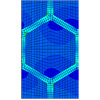
Performing multi-scale analysis on the honeycomb material cantilever, and verifying the validity of the multi-scale
analysis
The multi-scale analysis of the honeycomb
structure cantilever
Homogenization analysis of composite resin with oriented fiber

Introducing the example of creep homogenization analysis on the composite material that consists of a resin which
has the creep characteristics and fiber that is an elastic body and oriented at ±30°. In addition, identifying the
material properties value of the anisotropic creep using optimization based on the material test data of these.
Homogenization analysis of composite
resin with oriented fiber
Homogenization analysis of the electrically-conductive adhesive

Semiconductor packages have complex and various heterogeneous structures, and are composed of a variety of materials
such as ceramics, metal, and resin. This analysis example introduces the homogenization analysis of Ag-epoxy
electrically-conductive adhesive that is substituted for solder.
Data Provided by: Associate Professor, Yoshiharu Kariya, Shibaura Institute of Technology
Homogenization analysis of the
electrically-conductive adhesive
Micro/Macro sequential coupled analysis of electronic substrates

This example introduces an analysis applied to the actual model by evaluating the equivalent property value based on
the result of numerical material test by cutting out the cycle symmetry structure of the solder.
Micro/Macro sequential coupled analysis
of electronic substrates
Three-point bending test of the reinforced fiber composite materials

This example targets fiber-reinforced composite material which is oriented in one direction, and shows a series of
flow of numerical material test, material constant identification, and macro structural analysis.
Three-point bending test of the
reinforced fiber composite materials
Pipe subjected to internal pressure: Provided by NITTO BOSEKI CO.,LTD.
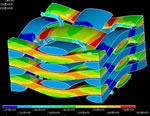
This analysis example shows consideration of improved compressive strength design for pipe
subjected to internal pressure.
Pipe subjected to internal pressure:
Provided by NITTO BOSEKI CO.,LTD.
Stress of an aircraft wing (localization analysis)

This example shows structural analysis of the main wing of an aircraft.
The analysis is conducted by replacing the honeycomb sandwich panels that make up the wing section with the
homogeneous body.
Stress of an aircraft wing (localization
analysis)
Flow in a catalytic converter (seepage flow homogenization analysis)

This is the seepage flow homogenization analysis of a catalytic converter to use redox to purify
hazardous substances, such as automobile exhaust gases.
Flow in a catalytic converter (seepage
flow homogenization analysis)
Micro-stress distribution of the internal metal structure (numerical material test)

This example shows a numerical material test for the structure of structural steel.
Steel has a layered pearlite structure that is a lamellar structure of ferrite and cementite. Modeling this in
practice, and performing a uniaxial tensile test in the X-axis direction.
Micro-stress distribution of the internal
metal structure (numerical material test)
Layered magnetic shield (Magnetic field homogenization analysis)

This example shows a static magnetic field analysis of the model consisting of a multilayer
magnetic shield and current source.
Layered magnetic shield (Magnetic field
homogenization analysis)
Elasto-plasticity homogenization analysis of CFRP

Performing the homogenization analysis for one-way reinforced material with carbon fiber and
polyimide resin.
Elasto-plasticity homogenization analysis
of CFRP
Viscoelastic numerical material test

Performing viscoelastic material numerical test on a reinforced model, assuming a typical
polymer-based composite material, such as woven cloth material with bundle-fibers in resin.
Performing
viscoelastic material numerical test on the assumption of a model that was reinforced with woven cloth material, a
typical polymer-based composite material, with bundle-fibers in resin.
Viscoelastic numerical material test
Super-elastic multi-scale analysis of tire

Performing a multi-scale analysis on a tire which is made of clusters of fiber-reinforced
composite material with rubber as the matrix.
Super-elastic multi-scale analysis of
tire



